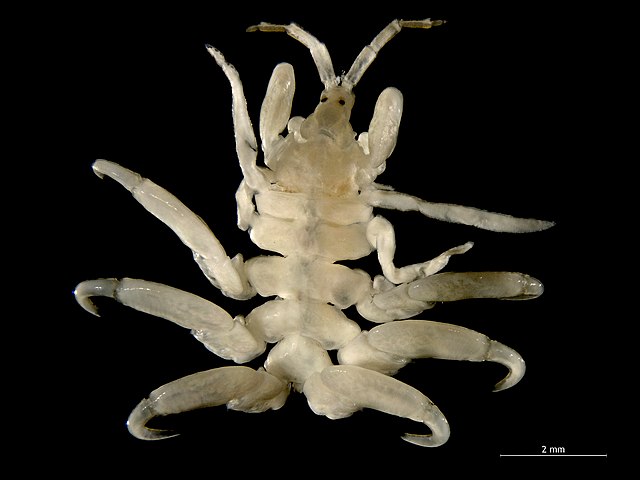A whale louse is a crustacean of the family Cyamidae. Despite the name, it is not a true louse, but rather is related to the skeleton shrimp, most species of which are found in shallower waters. Whale lice are external parasites, found in skin lesions, genital folds, nostrils and eyes of marine mammals of the order Cetacea. These include not only whales but also dolphins and porpoises.
Whale louse
Orange whale lice on a right whale
Crustaceans are a group of arthropods that are a part of the subphylum Crustacea, a large, diverse group of mainly aquatic arthropods including decapods, seed shrimp, branchiopods, fish lice, krill, remipedes, isopods, barnacles, copepods, opossum shrimps, amphipods and mantis shrimp. The crustacean group can be treated as a subphylum under the clade Mandibulata. It is now well accepted that the hexapods emerged deep in the Crustacean group, with the completed group referred to as Pancrustacea. The three classes Cephalocarida, Branchiopoda and Remipedia are more closely related to the hexapods than they are to any of the other crustaceans.
Image: Sally Lightfoot crab (4202519454)
Image: Humarus gammarus 1
Image: Procambarus clarkii
Image: Lysmata amboinensis in Tropicarium Oceanarium Budapest






